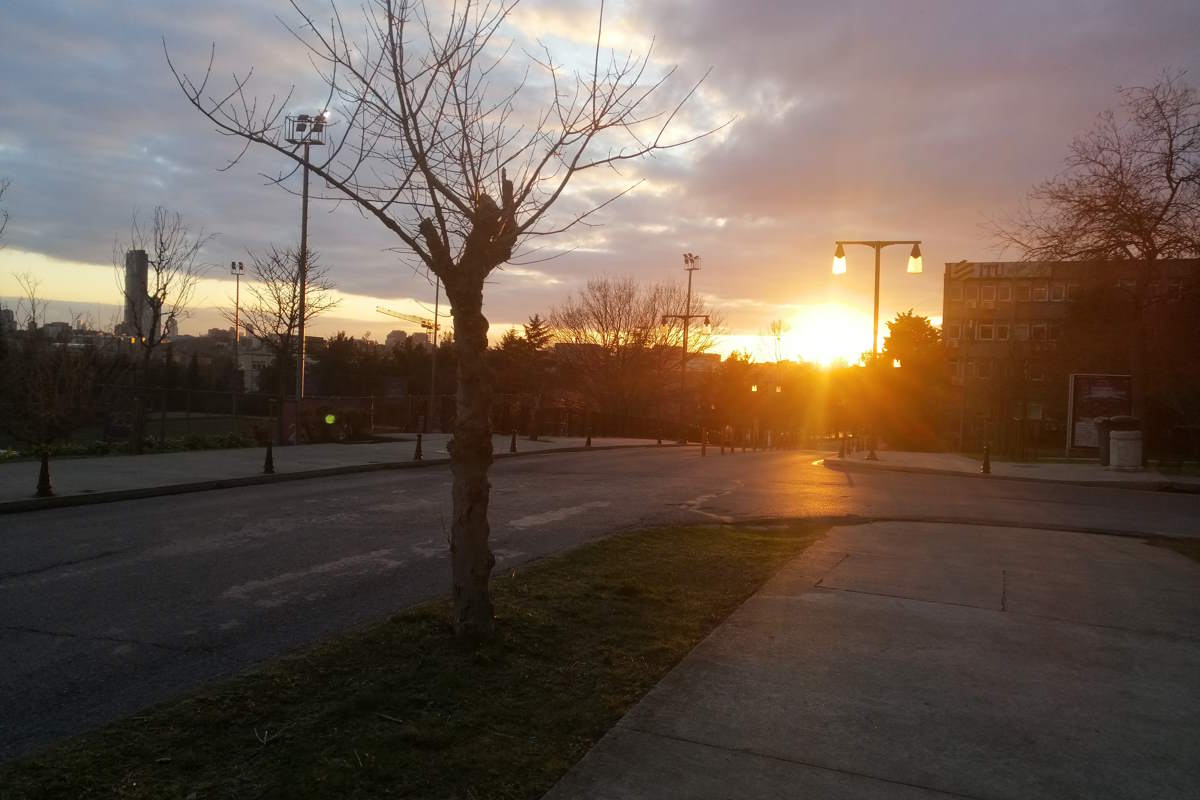The sky and the Sun appear in different colors (reddish or orange) during sunrise and sunset because of the way that light travels through the Earth’s atmosphere.
During the day, the Sun appears white because its light is composed of all the colors of the spectrum. As the Sun gets closer to the horizon during sunrise and sunset, its light has to travel through more of the Earth’s atmosphere before it reaches our eyes. This causes the shorter, bluer wavelengths of light to scatter more, leaving the longer, redder wavelengths to dominate.
As a result, the Sun appears reddish or orange during sunrise and sunset, and the sky takes on a reddish or orange hue as well. This effect is known as the Rayleigh scattering, and it is more pronounced during sunrise and sunset because the Sun’s light has to travel through a greater distance of the atmosphere than it does during the middle of the day.
It’s worth noting that the exact colors that we see during sunrise and sunset can be influenced by a variety of factors, including the amount of pollution or other particles in the atmosphere.
Rayleigh scattering is the reason that the sky and the Sun are reddish during the sunrise and sunset
Rayleigh scattering is a type of scattering of light that occurs when light waves pass through a medium, such as the Earth’s atmosphere. This phenomenon was first explained by the British scientist Lord Rayleigh (John William Strutt, 3rd Baron Rayleigh, OM, PC, FRS, 12 November 1842 – 30 June 1919) in the late 19th century.
In Rayleigh scattering, the incoming light waves interact with the molecules in the medium, causing the light to scatter in all directions. The amount of scattering that occurs depends on the wavelength of the light, with shorter wavelengths scattering more than longer wavelengths.

In the Earth’s atmosphere, the molecules that cause Rayleigh scattering are primarily nitrogen and oxygen. When the Sun’s light enters the atmosphere, it encounters these molecules, and the shorter, bluer wavelengths of light are scattered in all directions. This is why the sky appears blue during the daytime.
During sunrise and sunset, the Sun’s light has to travel through a greater distance of the atmosphere before it reaches our eyes. As a result, the shorter, bluer wavelengths are scattered even more, leaving the longer, redder wavelengths to dominate. This is why the Sun appears reddish or orange during these times, and why the sky takes on a reddish or orange hue as well.
It’s worth noting that Rayleigh scattering is just one of several types of scattering that can occur in the atmosphere and that other factors, such as the presence of particles in the atmosphere, can also affect the color of the sky and the Sun during sunrise and sunset.
Sources
- Rayleigh scattering on Wikipedia
- Moon Landings: All-Time List [1966-2025] - February 2, 2025
- What Is Max-Q and Why Is It Important During Rocket Launches? - January 16, 2025
- Top 10 Tallest Rockets Ever Launched [2025 Update] - January 16, 2025
